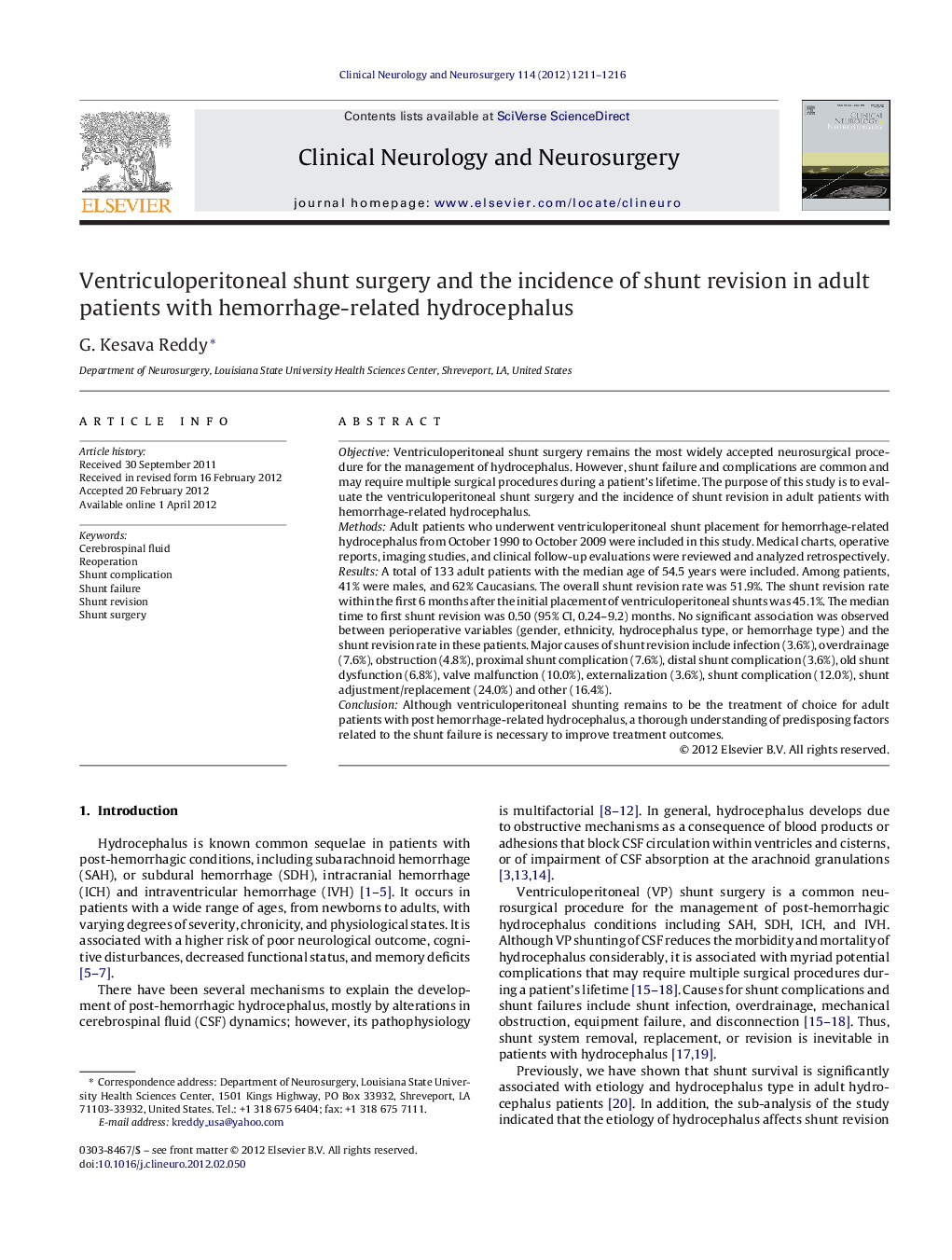| کد مقاله | کد نشریه | سال انتشار | مقاله انگلیسی | نسخه تمام متن |
|---|---|---|---|---|
| 3040685 | 1184745 | 2012 | 6 صفحه PDF | دانلود رایگان |

ObjectiveVentriculoperitoneal shunt surgery remains the most widely accepted neurosurgical procedure for the management of hydrocephalus. However, shunt failure and complications are common and may require multiple surgical procedures during a patient's lifetime. The purpose of this study is to evaluate the ventriculoperitoneal shunt surgery and the incidence of shunt revision in adult patients with hemorrhage-related hydrocephalus.MethodsAdult patients who underwent ventriculoperitoneal shunt placement for hemorrhage-related hydrocephalus from October 1990 to October 2009 were included in this study. Medical charts, operative reports, imaging studies, and clinical follow-up evaluations were reviewed and analyzed retrospectively.ResultsA total of 133 adult patients with the median age of 54.5 years were included. Among patients, 41% were males, and 62% Caucasians. The overall shunt revision rate was 51.9%. The shunt revision rate within the first 6 months after the initial placement of ventriculoperitoneal shunts was 45.1%. The median time to first shunt revision was 0.50 (95% CI, 0.24–9.2) months. No significant association was observed between perioperative variables (gender, ethnicity, hydrocephalus type, or hemorrhage type) and the shunt revision rate in these patients. Major causes of shunt revision include infection (3.6%), overdrainage (7.6%), obstruction (4.8%), proximal shunt complication (7.6%), distal shunt complication (3.6%), old shunt dysfunction (6.8%), valve malfunction (10.0%), externalization (3.6%), shunt complication (12.0%), shunt adjustment/replacement (24.0%) and other (16.4%).ConclusionAlthough ventriculoperitoneal shunting remains to be the treatment of choice for adult patients with post hemorrhage-related hydrocephalus, a thorough understanding of predisposing factors related to the shunt failure is necessary to improve treatment outcomes.
Journal: Clinical Neurology and Neurosurgery - Volume 114, Issue 9, November 2012, Pages 1211–1216